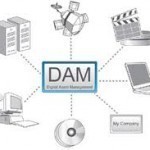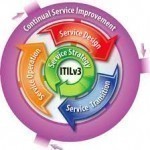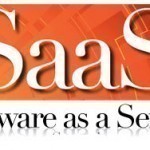As technology advances and the Internet expands, many businesses and individuals alike are taking advantage of the wide market by creating an ecommerce presence on the Internet. Ecommerce today is what makes our financial world go round as trillions of dollars are exchanged every day by people all around the world. As you may not be familiar with what ecommerce is, we have written this article to help you not only familiarize yourself with ecommerce but to also become an active member in the ecommerce world. What is Ecommerce Ecommerce Read More
Distributed Computing

Distributed computing refers to the means by which a single computer program runs in more than one computer at the same time. In particular, the different elements and objects of a program are being run or processed using different computer processors. Distributed computing is similar to parallel computing and grid computing. Parallel computing, though, refers to running a single program using a minimum of two processors that belong to one computer. Grid computing, on the other hand, refers to a more dedicated distributed computing setup – one whose computer ‘members’ Read More
Cloud Computing SLA’s

Service Level Agreements (SLAs) have been an effective tool for managing IT service vendors for two decades now. Many companies also use internal SLAs for managing relationships between departments. Service Level Agreements define the duties of both organizations. External SLAs also define penalties which occur when the service provider organization fails to provide the defined level of service. Cloud computing represents a new playing field for SLAs. Cloud computing integrates far more deeply into an organization than traditional IT outsourcing, but at the same time it does not provide the Read More
Digital Asset Management

Digital Asset Management (DAM) refers to technology which helps us to manage the mass of data which we work with in our personal and professional lives. Digital asset management is a set of processes that when working together give a system, repository, and enabling workflow process for managing publishable media content such as images, illustrations, documents, audio, video and physical (non-digital) elements. Digital assets include documents, emails, pictures, MP3’s, online movies, and any other content which we store on a computer. Digital Asset Management applications try to help with one Read More
ITIL Framework

The ITIL (Information Technology Infrastructure Library) framework is a collection of concepts for information technology systems and operations. It is the most widely accepted reference standard concerning a wide variety of subjects including service support, service delivery, service management, infrastructure management, application management, security management, and business strategies. Companies can refer to the ITIL framework in order to improve business and set their own policies and alter the ITIL framework to suit their specific needs and/or experiences. How ITIL Framework Works The ITIL framework maximizes a company’s potential by Read More
SaaS (Software as a Service)

SaaS (Software as a Service) is an application hosted on a remote server and accessed through the Internet. Simple examples of SaaS are the “free” email (also called web-based email) systems offered on the Internet such as Microsoft Hotmail, G-mail, and Yahoo Mail. Each program meets the basic criteria of an SaaS application: a vendor (Microsoft, Google, or Yahoo) hosts all of the programs, logic, and data in a central location and gives users access to this data and software via the worldwide web. This “simple” application architecture can be Read More
Business Intelligence

Business Intelligence is a broad field of study. The major thrust of business intelligence theory looks at certain factors to make high quality decisions. These factors include customers, competitors, business partners, economic environment and internal operations. Here is some more information on how these factors help businesses make quality decisions. Customers: Without customers a business can’t survive. Businesses need to sell their products and services. Business intelligence helps businesses understand their customers better, looking at their preferences, helping businesses adapt to their customers demand. Business intelligence is used to collect Read More
Sarbanes-Oxley

The Sarbanes-Oxley Act was signed into law on July 30, 2002 by President Bush, and was approved by the House by a vote of 423-3 and by the Senate 99-0. Sarbanes-Oxley is considered the most significant change to federal securities laws in the United States since the New Deal. Officially titled the Public Company Accounting Reform and Investor Protection Act of 2002, and commonly called SOX and Sarbox, it was named after sponsors Senator Paul Sarbanes (D-MD) and Representative Michael G. Oxley (R-OH) and came as result of a series Read More
DMADV

DMADV is one of two major methodologies of the Six Sigma system. The Six Sigma system is a way to improve processes in work and manufacturing and its main goal is to eliminate defects. The Six Sigma methodology has been widely used by many Fortune 500 corporations with amazing results and can be used in small groups to achieve goals or on a corporate level affecting tens of thousands of workers. The short definition of the Six Sigma system is a set of practices that improve efficiency and remove defects. Read More
GroupWare
In the modern era, enterprises are expanding beyond both local and national borders. Hence, collaboration between employees who are located all over the world can be problematic. In order for large, multinational companies to remain competitive, such collaboration is required, hence the need for GroupWare. What is GroupWare? Groupware (Collaborative Software) is any software, application, or device that allows two or more persons to communicate and solve technological problems collaboratively without being together physically. The development of the Internet, video conferencing, other communication technologies, and Collaborative Software has spiraled, thus Read More


Share on: